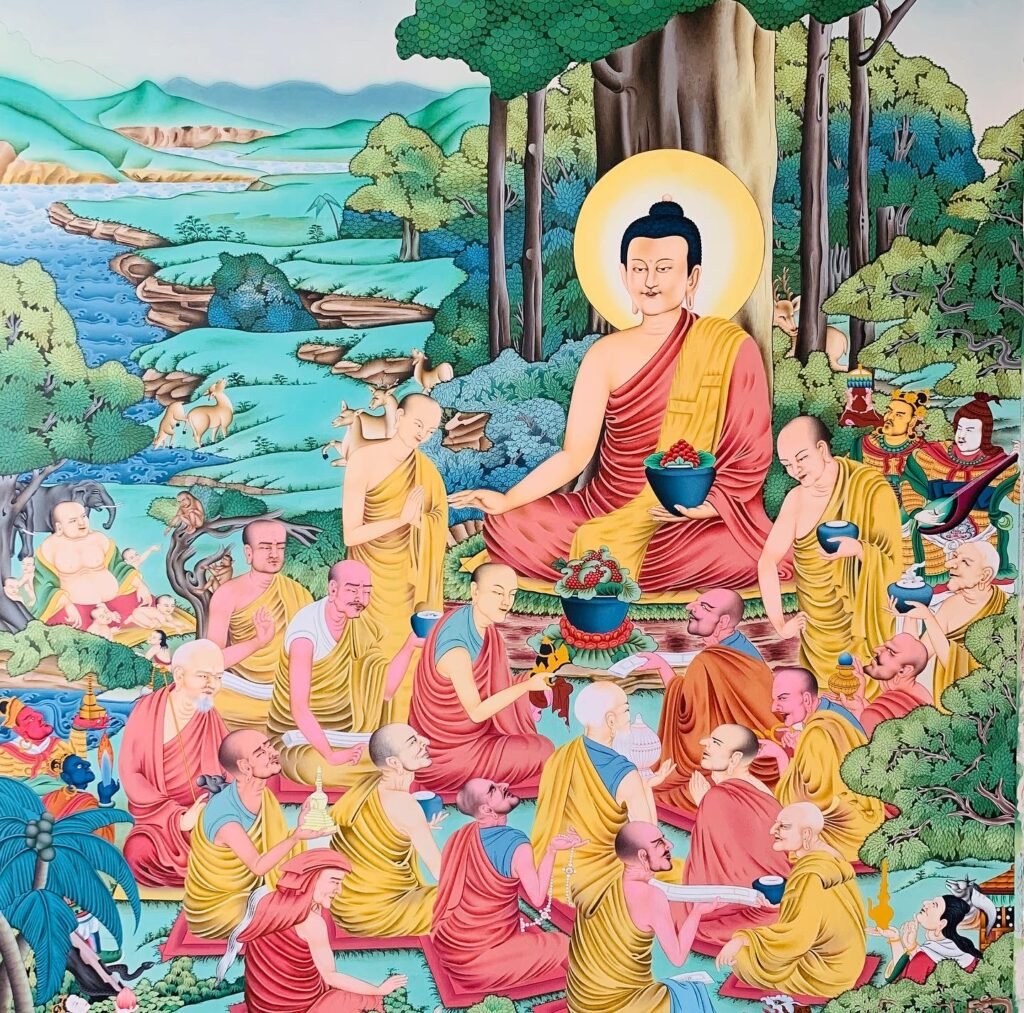The image of the Buddha represents a significant innovation if Buddhist art. as we have already noted, in the earliest Buddhist art the primary image of the deceased Buddha was the stupa, the reliquary mound intended to function as a lotus for pilgrimage and as a reminder of the doctrine of impermanence. Early Buddhology found it inappropriate to represent the Buddha in iconic form because the Buddha had made it clear that he was not to be identified with his body.

why, then, did this attitude change in the first century B.C.E.? Part of the answer many be found in traditions outside of Buddhism. some early Indian traditions did not use anthropomorphic images. whereas others, stemming from the pre-Aryan civilization of the Indus, did use a variety of images of male and female individuals and deities. This iconographic tradition reappeared in popular religious art of the third to first centuries B.C.E, concurrent with the development of theism and bhakti (devotion) in early popular Hinduism.
Buddhisim and hinduism is similar
Buddhists, watching trends in Hinduism, may have wanted a more personal focal point for their worship than the abstract stupa. A specifically Indian style of Buddha- image was developed in the upper Ganges city of Mathura, which had long specialized in producing images of yaksas and yaksinis, male and female deities of superhuman power and size worshiped by devotees seeking worldly protection and benefits. The Mathura Buddha greatly resembled the yaksa images boith in form and function. The earliest sculptors invariably represented him as massive and strong, with his right hand in a gesture of offering protection. Such an image of the Buddha must be considered “popular,” that is, a response to the worldly needs of this worshipers.
How start to Buddha Image
Greek traditions also seem to have played a role in the development of the Buddha-image. In addition to Mathura, Gandhara in northwest India produced numerous early Buddha-images. This was an area that had experienced many foreign invasions and dynasties, and was thus open to Hellenistic influences. The Gandharan Buddha greatly resembles Apollo and wears a Roman toga, but lacks the warmth of the Mathuran modeling. Unlike Mthuran artisans, Gandharan artisans created narrative sculptures of the Buddha’s life, portraying specific incidents in realistic detail, with the Buddha in various poses.
In later centuries, the hieratic and narrative modes of Mathuran and Gandharan sculpture gradually combined until in the Gupta period (fourth to seventh century C.E.) the classical meditative, transcendental Buddha- image developed.
is there Buddha and Bodhisattvas are come same time
Images of the great bodhisattvas appeared concurrently with images of the Buddha in the first century B.C.E. No Images were identified with specific bodhisattvas until the following century, when images of Maitreya were sculpted. In the second century C.E. differences between the iconography of Buddha and bodhisattva images began to appear, along with the first image of a Cosmic Buddha, Amitabha dated 104 C.E. The image of the pensive bodhisattva his right foot on his left knee, his right hand to his temple which was to have a long history in Buddhist art, and early second centuries mark the beginning of independent bodies of bodhisattve and Cosmic Buddha lore.
Only later were images of Avalokitesvara, Manjusri, and Tara produced. Mahayana versions of Sakyamuni identifiable because they portray him sitting western style on a throne, an attitude common to the Mahayana sutras but never used in the earlier texts were not sculpted until the third or fourth century C.E. These images probably reflect the growing tendency among Mahayanists at that time to view themselves as a distinct group, separate from their Hinayana contemporaries and forebears.
